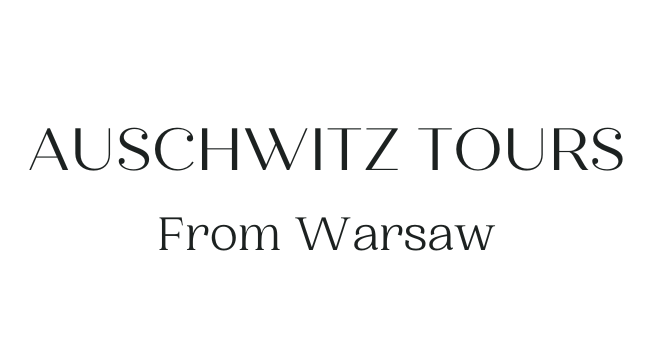3 Days in Warsaw Itinerary: A Complete Guide for 2025
If you have ever dreamt of wandering in a city full of history, culture, and modernity, then your dream spot is going to be Warsaw, Poland’s capital city. And this is the 3 days in Warsaw itinerary you’re looking for!
You’re just 3 days short of soaking in some rich history, great nightlife, and lip-smacking sight of delicious Polish cuisine. Whether you’re a lover of history, always happy to bag that last museum ticket, or a culture enthusiast, there’s no better guide to the 3-day trip of Warsaw.
Well, what are we waiting for? Let’s get right into it.
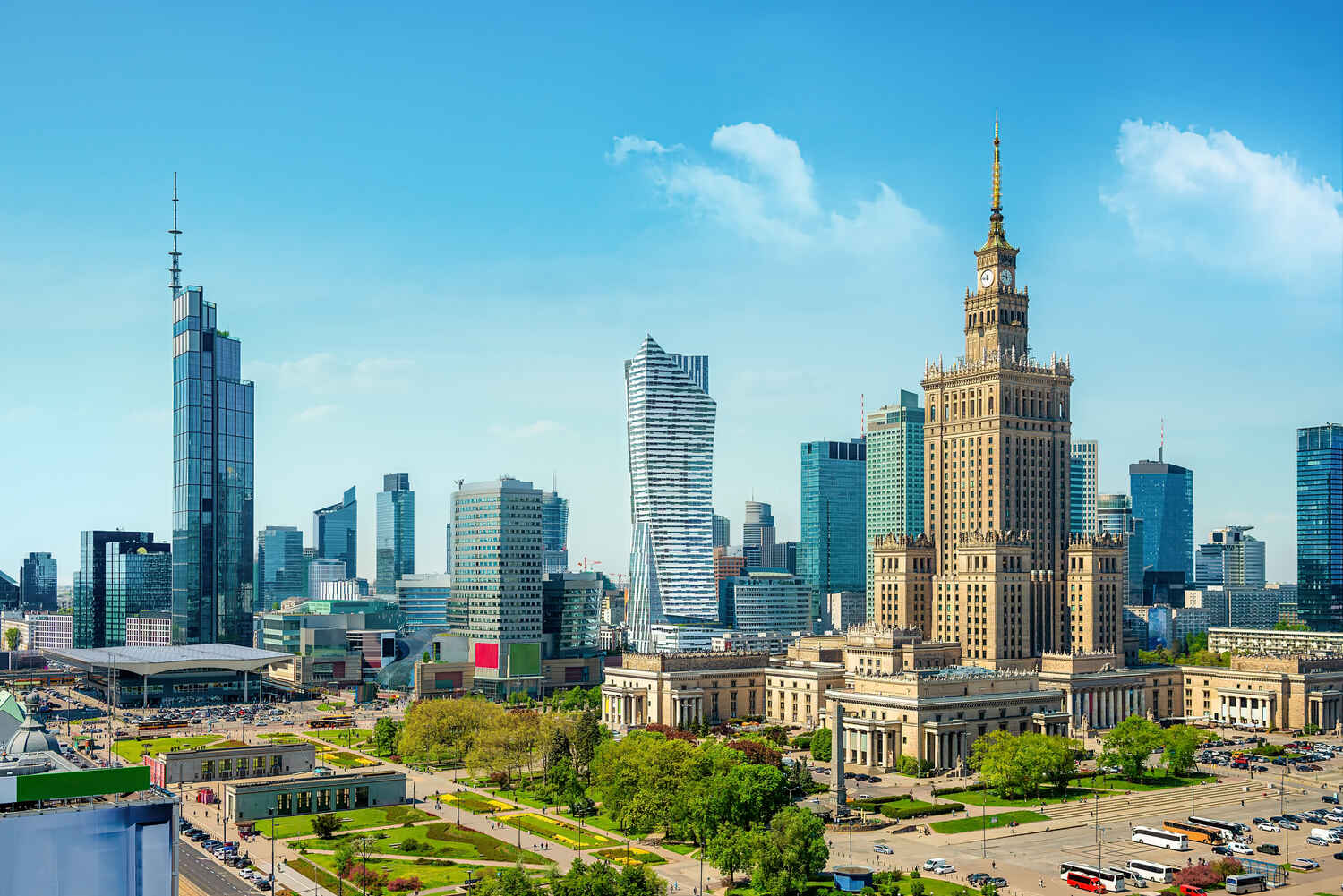
3 Days in Warsaw Itinerary – Overview
Warsaw sits in central Poland, roughly halfway between Berlin and Vilnius. Summers are warm, winters can be icy, and spring or early autumn brings mild weather with thinner crowds. English is widely spoken in cafés, museums, and hotels, so getting around is straightforward.
How to Get to Warsaw?
Chopin Airport (WAW) is just 9 km southwest of Warsaw’s Central Station. Hop on the SKM train S2 or S3 and you’re in the city centre in 20 minutes for only 4.80 PLN. Modlin Airport (WMI) is 40 km out; the shuttle-plus-train combo costs 19 PLN and lands you at Central in 75-90 minutes.
Long-distance trains link Berlin, Prague, Vienna and Vilnius daily, while FlixBus covers cheaper overnight runs. Driving in is easy via the A2 motorway, but parking in Śródmieście is pricey, so drop the car once you arrive.
Once in town, you can get a 72-hour transport pass, which covers trams, buses, and the metro for cheap.
Is Warsaw Worth Visiting?
Yes, and not just for the history lovers. The city blends gritty street art, cutting-edge food halls, and green pockets like Łazienki Park, yet it still feels less crowded (and cheaper) than Prague or Budapest.
Museum tickets rarely top 50 PLN, a craft-beer pint hovers around 18 PLN, and many tourist spots are free to enter one day a week. Add late-night trams and riverside bars that open until 02:00, and you’ve got a city that pays you back for the flight.
While it’s a little far, it’s worth taking a day trip from Warsaw to Auschwitz concentration camps, which is a must-do while in Poland.
Are 3 Days in Warsaw Enough?
Three days in Warsaw are enough, and you can see most of the tourist attractions. You’ll have time to visit the castle, two or three museums, a royal park, street-food sampling, and one day-trip.
You’ll walk about 10 km daily at a relaxed pace. If you crave niche corners, Praga street art, Wilanów Palace, or football at Legia, add another night. Otherwise, the itinerary below squeezes a lot in without rushing around too much.
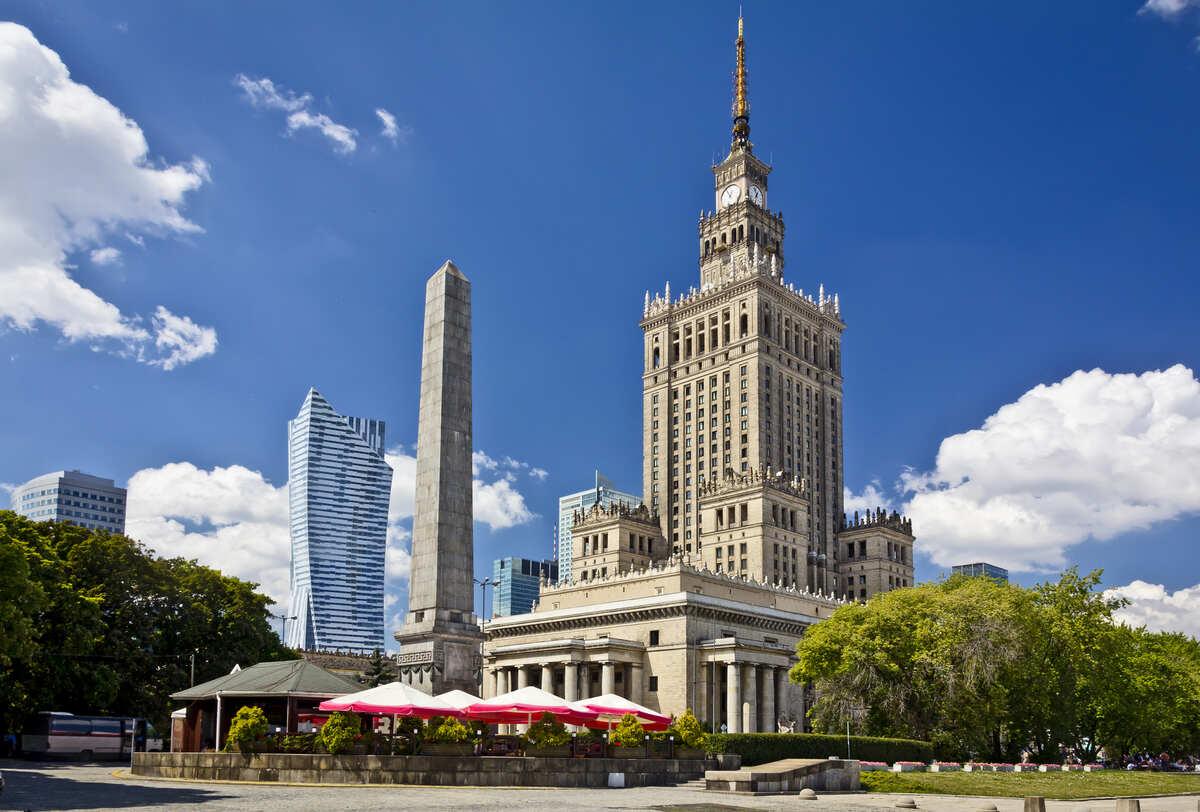
3-Day Warsaw Itinerary
Now that you have a little more information about Warsaw, let’s go through this itinerary day by day. Spoiler alert: You’ll have an amazing time in town!
Warsaw Itinerary Day 1
Let your three-day Warsaw trip start out on the most beautiful street in the city if you are into this sort of thing (note: we are really into this sort of thing) – and end in the well-preserved historical center.
Morning: Visit the Royal Castle
Start your day with one of Warsaw’s top landmarks, the Royal Castle. It’s located right in Castle Square and you can’t miss it. The red-brick facade, the towers, the Polish flag waving: it’s all pretty impressive from the outside. But the inside is the best part of the complex.
Buy a ticket (60 PLN for adults, free on Wednesdays) and visit the rooms filled with rich reds, fancy furniture, and golden details. You’ll see the Throne Room, Great Assembly Hall, and art collections that go way beyond just “old paintings.”
The castle took a beating during WWII—completely destroyed. What you see today was rebuilt, brick by brick, in the 60s and 70s, but it’s as authentic as it gets. It’s a powerful reminder of what the city went through.
If you’re curious about the royals who once lived here and how the place actually functioned, take the guided tour. The guides really know their stuff and can tell you stories you won’t find on the info plaques. It’s a solid way to kick off your Warsaw trip.
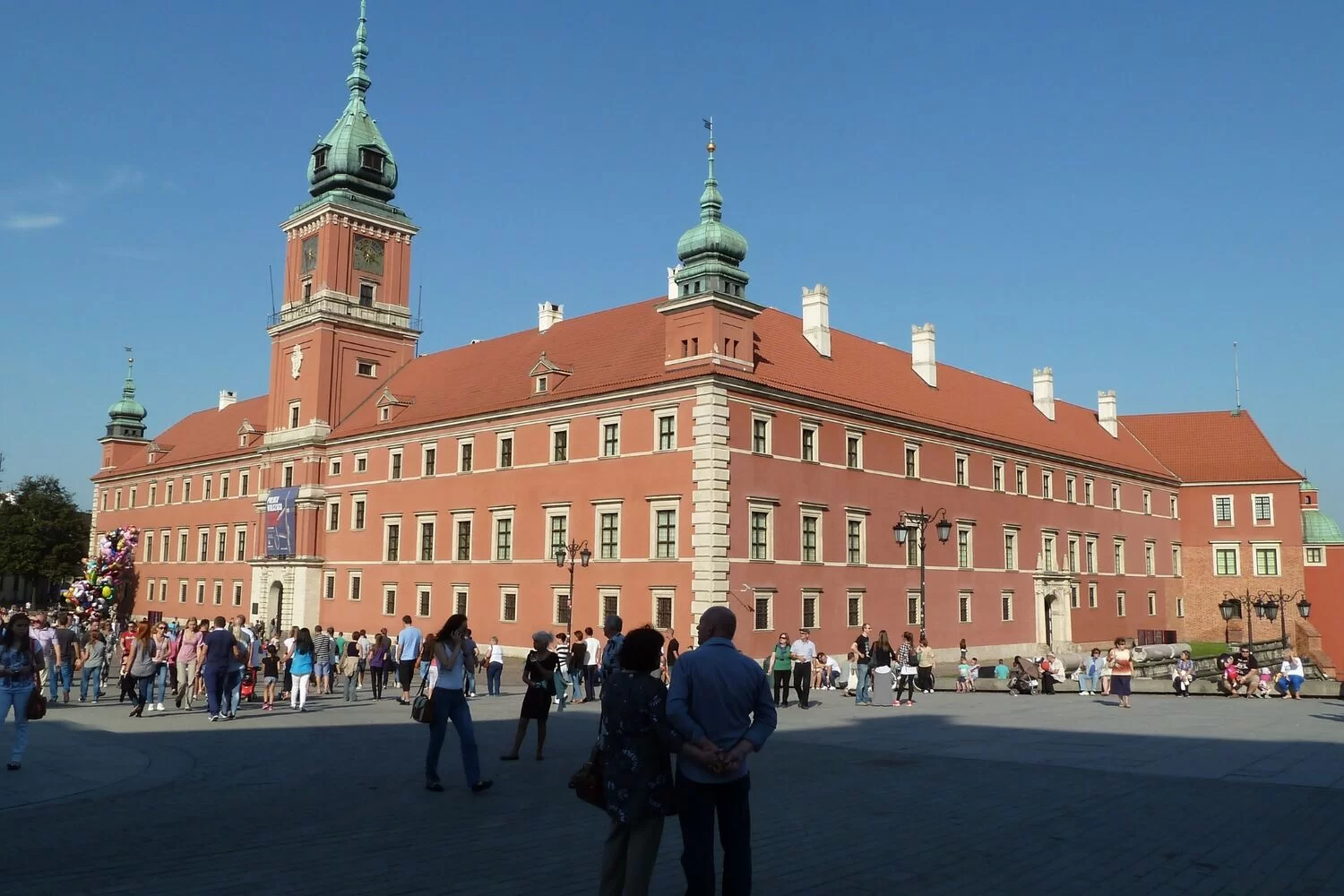
Morning: Roam Around the Old Town
Once you’re done with the castle, head straight to the old town. You’ll feel like you’ve traveled back a few centuries—but with cafés and gelato stands.
The Old Town is a UNESCO site, but more importantly, it’s got great energy. The buildings may look ancient, but most of them were rebuilt after WWII. Still, the spirit feels real. Check out Market Square and find the famous Mermaid Statue (it’s the unofficial symbol of Warsaw). Nearby, Plac Kanonia hides the Wishing Bell. Give it a try!
There’s a lot to take in here, with colorful facades, gothic churches, little side alleys, street performers. You could explore on your own, sure.
But if you really want to understand what happened here, from medieval times to the war and post-war reconstruction, join a walking tour. They’re cheap, usually last about two hours, and make the experience so much better. The catch though? They often sell out in the summer, so do yourself a favor and book ahead of time.
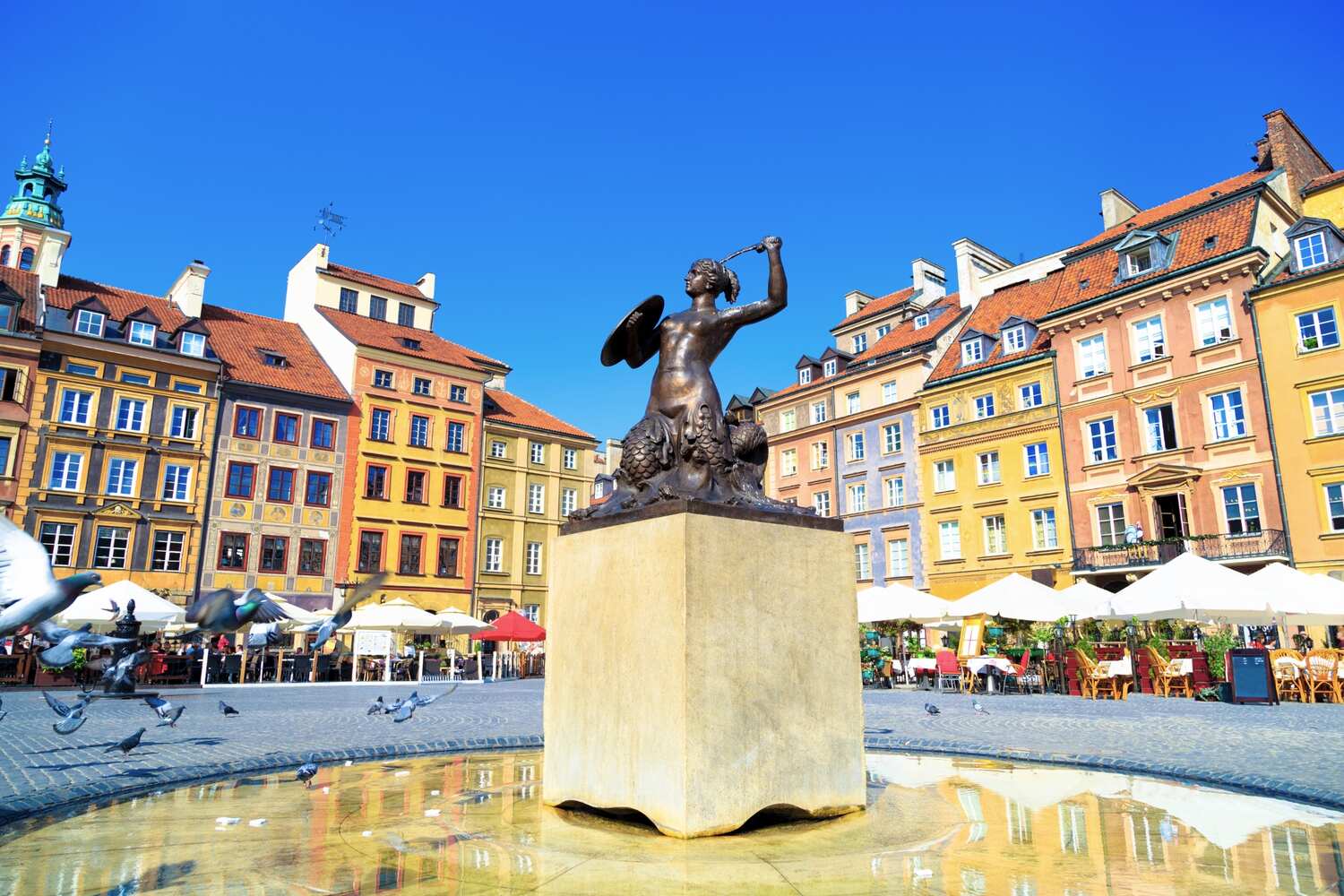

Morning: Krasinski Palace Gardens
About a 10-minute walk from the Old Town Market Square, you’ll find a quieter spot, Krasiński Palace Gardens. Not many people talk about it, but locals love this park, including us.
The palace itself looks impressive from the outside, though you can’t go in sadly. It was the former home of the Krasiński family. Just like other parts of Warsaw, the building was badly damaged during WWII but rebuilt with care.
What you’re really here for, though, are the gardens. It’s open all day and there’s no entrance fee, nice bonus, right?
There’s lots of open grass, tidy little flower beds, and just enough trees to give you some shade. It feels surprisingly quiet for somewhere so close to the center. Grab a bench by the pond, kick your feet up, and just chill for a bit. Pack a quick picnic if you’re in the mood.
At the entrance on Miodowa Street, check out the modern Pegasus sculptures too. They add a quirky contrast to the palace’s more classic style. If you’re lucky, you might catch a free outdoor concert or cultural event here.
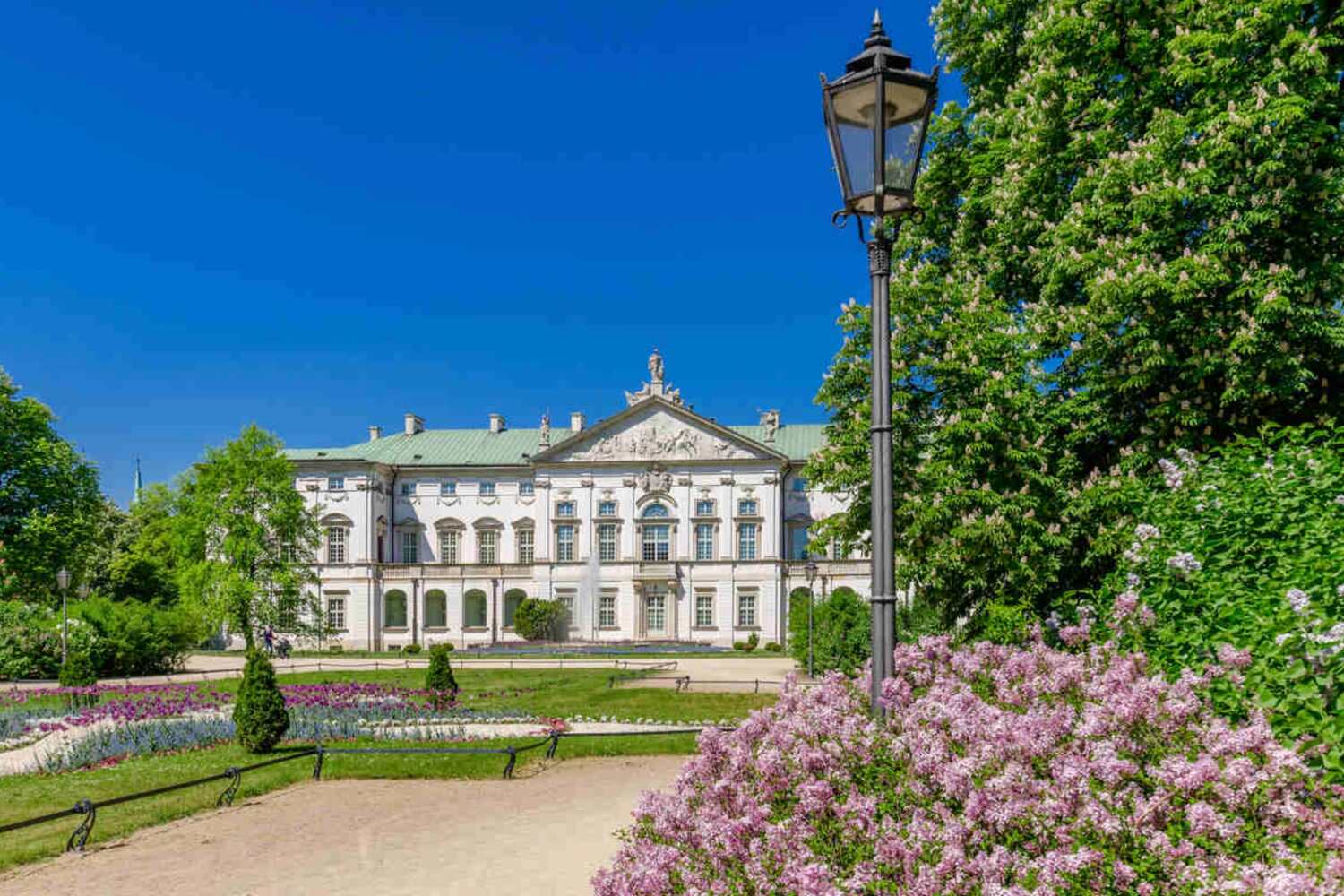
Lunch at Bazyliszek Restaurant
Time to eat. Head back to Old Town Square and grab a table at Bazyliszek. It’s not the cheapest place around, but the food’s solid and you can’t beat the location.
The restaurant is inside a restored historic building with stone walls and wooden beams. Cozy in winter, lively in summer with the outdoor seating. What else to ask for? The menu focuses on old-school Polish comfort food, think hearty, flavorful, and filling.
Order the duck pierogi if they’re available. The dumplings are stuffed with rich duck meat, pan-fried slightly so the edges get crispy, and served with a little tangy sauce. Another solid choice: pork knuckle, slow-cooked until it falls off the bone. Comes with sauerkraut and potatoes. Classic combo.
You’ll also find zurek soup with sausage and egg, potato pancakes with sour cream, or tartare if you’re feeling bold. There are plenty of beer options. You can go for a cold Polish lager on tap or pick something from the bottle list.
Service is warm, the vibe is relaxed, and the people-watching is excellent. Take your time and enjoy the break on this 3-day Warsaw itinerary. You’ve earned it!
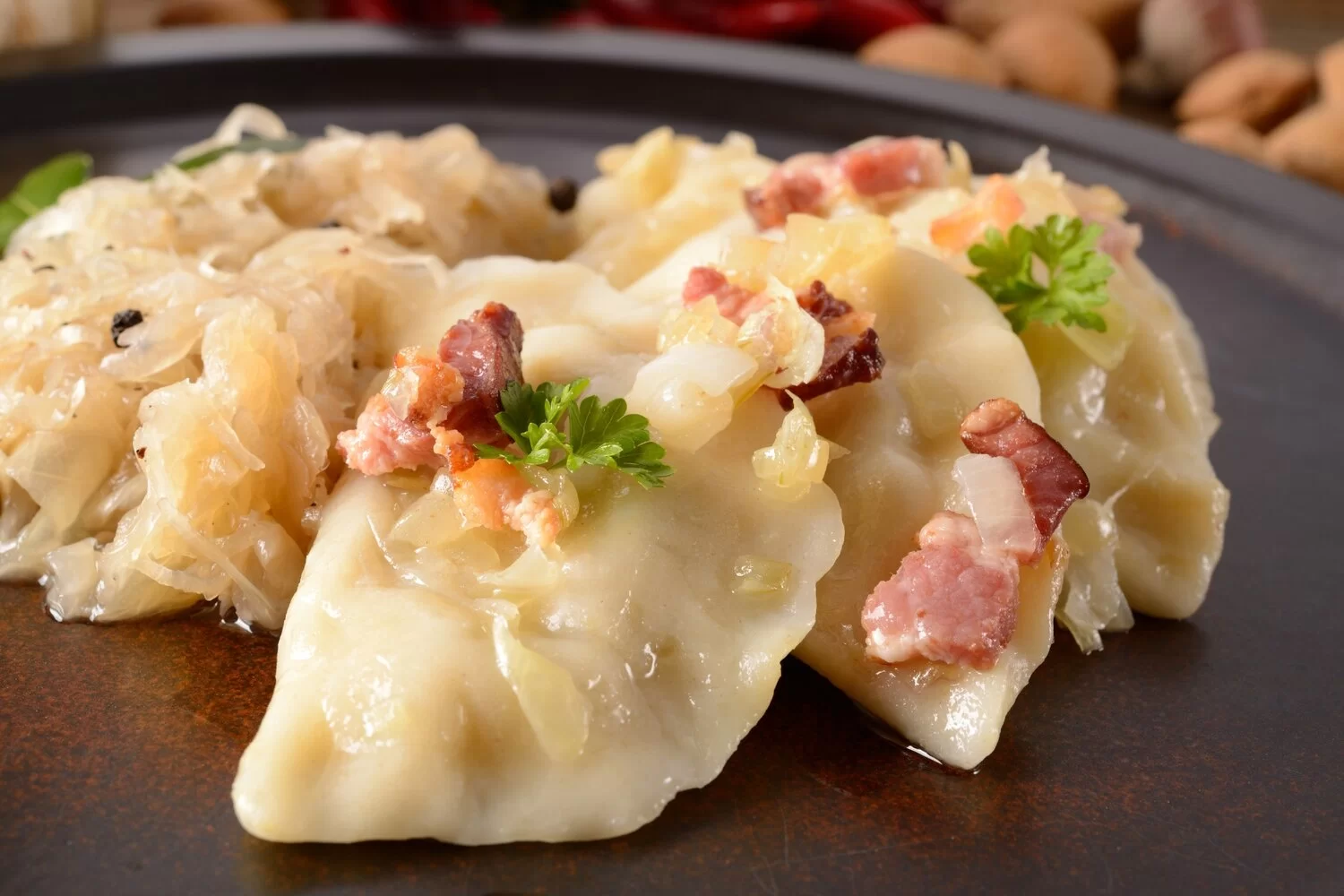
Afternoon: Walk Along the Royal Route
This is one of the most iconic walks in Warsaw, and honestly, it’s the kind of place that makes you slow down a bit and actually look around, even if it gets busy in the summertime. The Royal Route is a stretch of connected streets starting at Castle Square and heading south all the way to Wilanów Palace.
Pass the Presidential Palace, Warsaw University, and gorgeous old churches and townhouses on Krakowskie Przedmieście and Nowy Świat. It’s a mix of historical setting and real city life. There are cafes, bookstores, and the occasional street musician keeping the vibe relaxed.
Eventually, the route flows into Aleje Ujazdowskie, a wide, tree-lined avenue with embassies and government building. Around Christmas, this entire stretch lights up with thousands of fairy lights. We locals call it the Great Illumination, and it’s easily one of the prettiest parts of the city in winter.
It’s the perfect kind of walk for a sunny afternoon or even a chilly one, especially if you grab a coffee on the go.
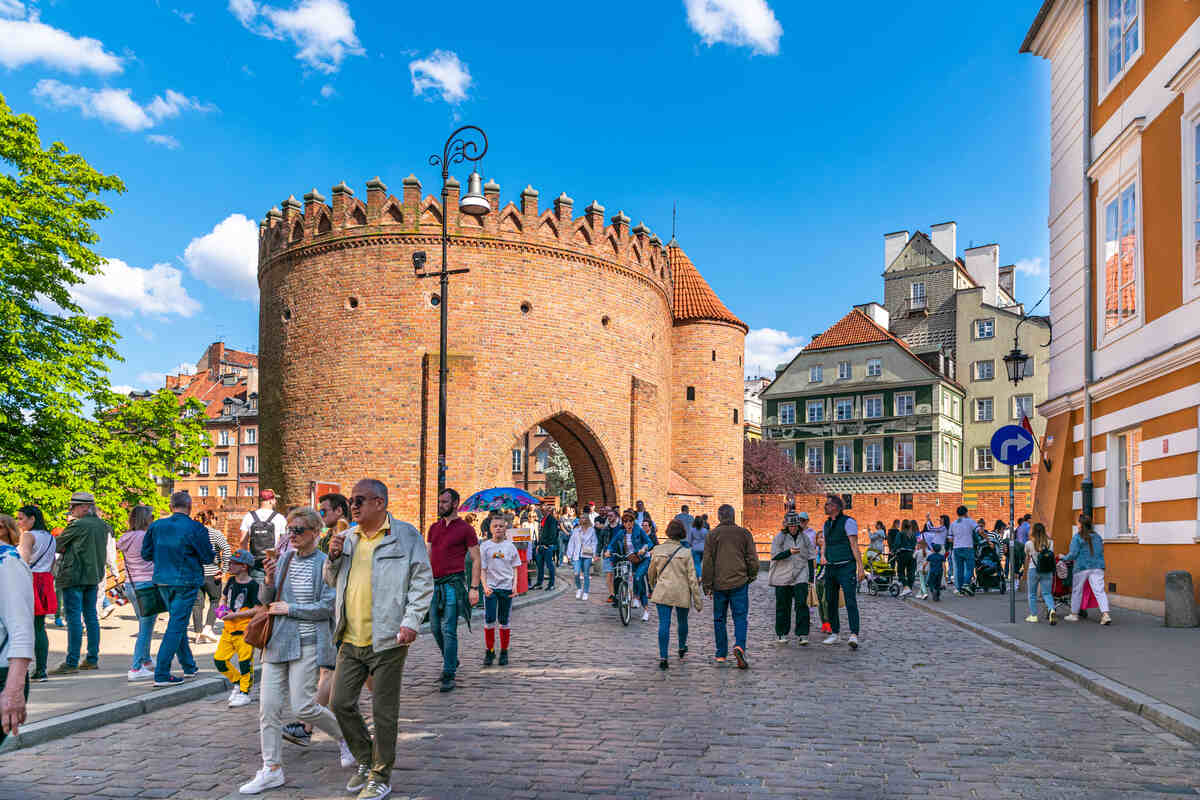
Afternoon: Visit Lazienki Park and Royal Lazienki Museum
Łazienki Park is massive, peaceful, and one of those places where you stop mid-step just to take it all in. Once a royal residence, it’s now open to everyone. Free entry, no gates, just walk in. You’ll find peaceful gardens, quiet tree-lined paths, ponds full of swans, and peacocks roaming around.
Right in the middle sits Łazienki Palace on the Isle. Built in the 1700s for King Stanislaus II Augustus, it literally floats on water and calls for photos. Note that, yes, it looks great in photos, but it’s even better in person. Inside, you’ll walk through rooms filled with painted ceilings, old furniture, and royal-era art.
If you have the time (and energy), check out the Old Orangery with its nice sculpture gallery, the Myślewicki Palace, and other smaller buildings around the park. A full-access ticket costs 80 PLN (but Fridays are free).
Last but not least, don’t miss the Chopin Monument. In the summer, every Sunday, you can catch free live piano concerts there. Some folks bring blankets and a snack, others just sit on the grass. Even if classical music isn’t your thing, sitting in the shade with live Chopin and birds overhead is a core memory right there.
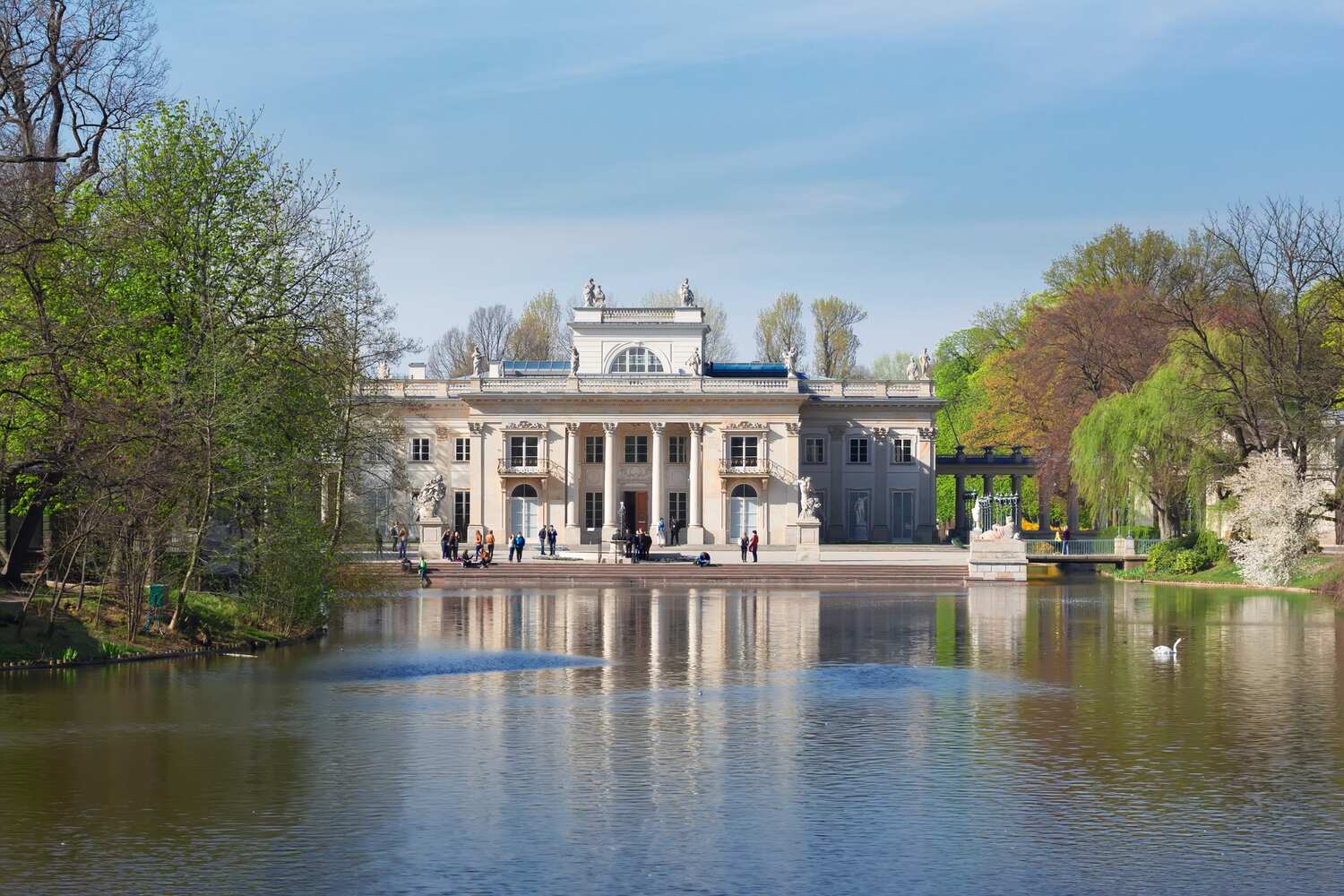
Afternoon: Take a Polish Food Tour
This is something hardly anyone thinks about when visiting Warsaw, but three reasons make it a must-do.
On this Polish food tour, you have the chance to try out the best Polish dishes — as many as 10 – and your happy plate is right here. There’s also a Vodka tasting part and you get to try the bold bottle of Vodka as your opportunity in hand or on-the-other-hand.
You also have a chance to socialize with other travelers… so much more fun than you’d imagine!
Soon, I’ll give more tips on where you should and shouldn’t eat up in the Warsaw itinerary, but this one is the best start to your adventure, and that’s why I highly recommend it. Check it out here below!
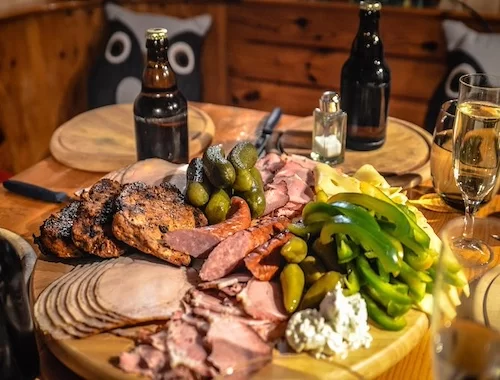
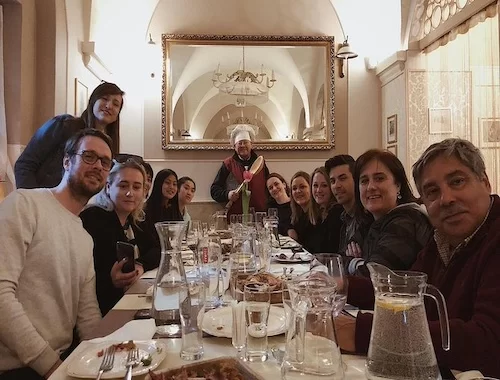
Evening: See a Chopin Concert in Warsaw Old Town
End your first day in Warsaw with some live Chopin. It’s nothing too fancy or over the top, but rather just good music in a quiet room. These concerts happen all over the city, but the ones in Old Town are the best. Some are held in the Royal Castle, others in smaller historic halls nearby.
The vibe is intimate. We’re talking 30 or 40 seats at most. No giant stage, no sound system blasting, just a pianist and a grand piano a few feet away. Each night brings a different musician, so you might get something soft and dreamy, or something more intense. Either way, it feels personal.
Your ticket usually includes a glass of Polish mead (honey wine), which adds a nice touch. After the last note, you can stay for a little bit, maybe talk to the pianist, or just explore Warsaw at night.
It’s the perfect way to wind down. No crowds, no stress. Just you, the music, and Warsaw at night.
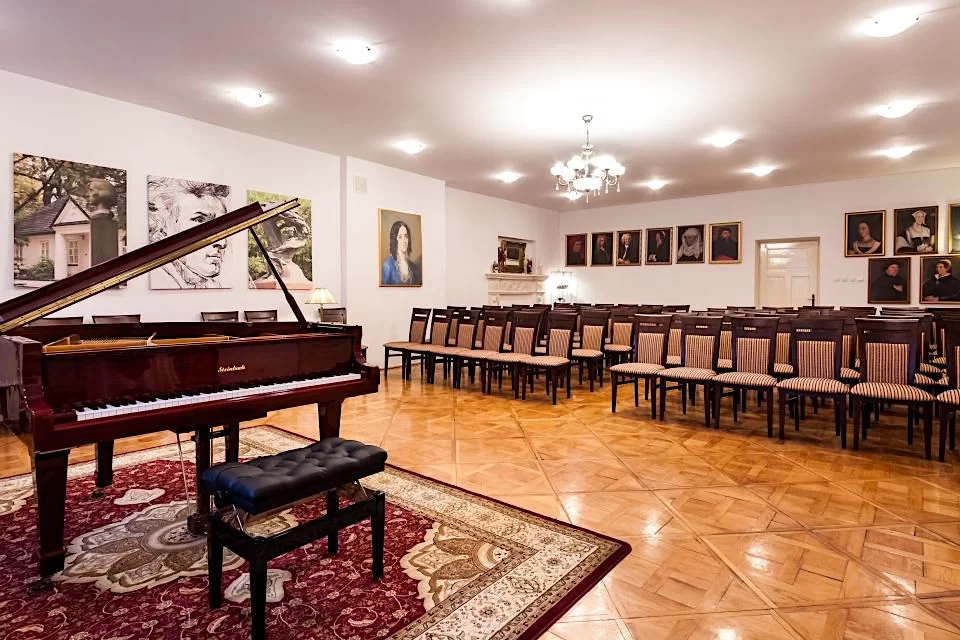
Warsaw Itinerary Day 2
Today is our second day in Warsaw, which covers a bit of sightseeing but mostly delves into the city’s museums and takes you off the beaten path. Here are some cool things to do on day 2.
Morning: Visit the Warsaw Uprising Museum
Let’s start off with a quick visit to the Warsaw Uprising Museum. The Warsaw Uprising Museum is a touching memorial to those who fought for Poland’s independence in World War II.
Housed in a former tram power plant, the museum has more than a thousand exhibits, including weapons, photographs and personal belongings of the insurgents.
The museum offers an immersive, guided tour of life during and after the Uprising. Make sure to get an audio-guide for 10 Zloty to enjoy the museum.
As you tour the museum, it will provide you with background and context that will make your visit more meaningful and informative.
One of the highlights of the museum is a replica of a B-24 Liberator, the kind of bomber that dropped supplies to the insurgents. Another must-see is the underground maze that the insurgents used to move around the city undetected.
Nearby is Freedom Park, a memorial to the over 10,000 insurgents who gave their lives in the uprising. The park includes a wall of remembrance and a striking monument of a young insurgent soldier.
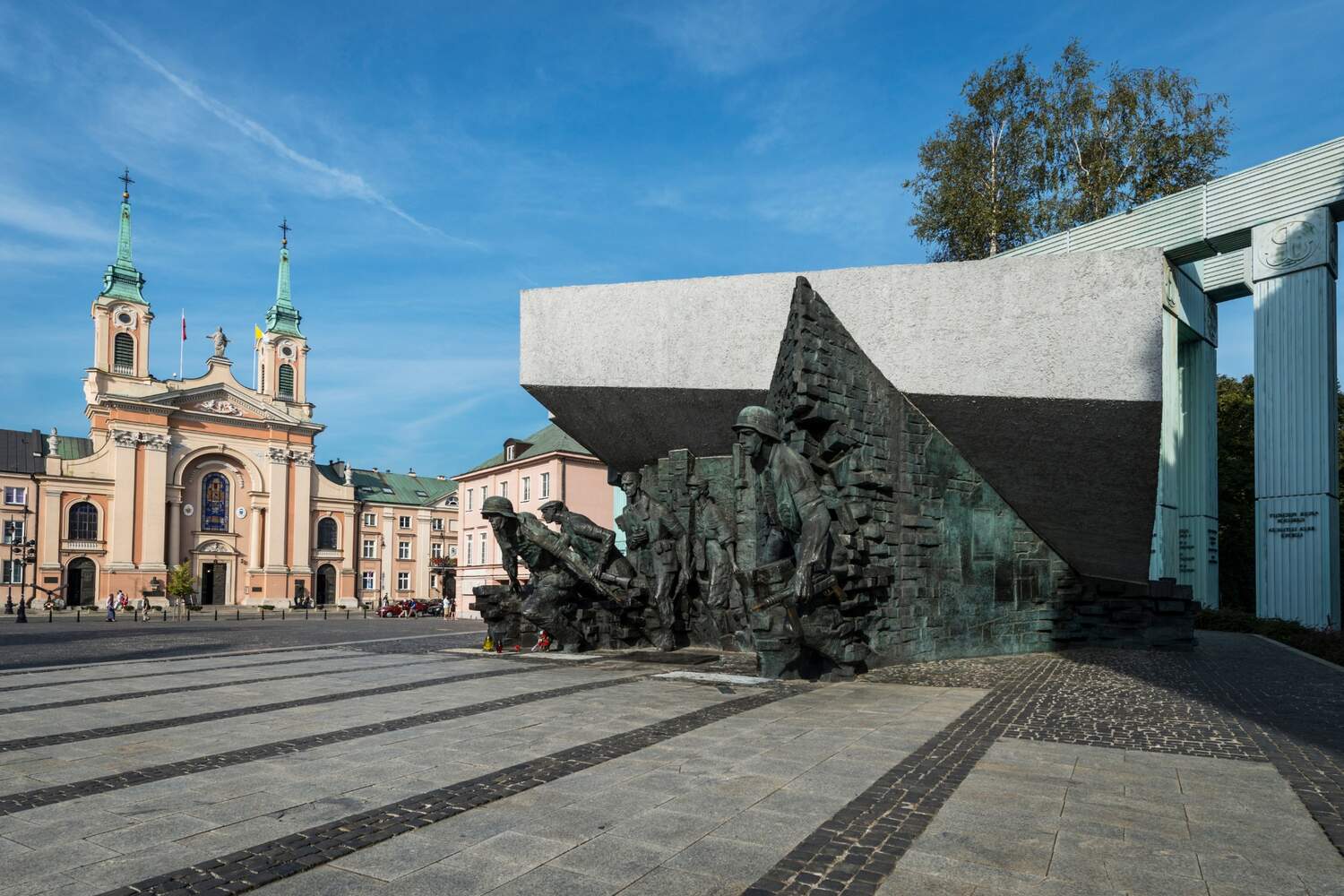
Visit the POLIN Museum of the History of Polish Jews
The Polin Museum of the History of Polish Jews is the first place that the government, a local government, and a non-government organization worked together to create.
The museum is a unique cultural one about Jewish life in Poland over a period of a thousand years.
Polin is also a place where people can meet and discuss the past and present of Jewish community, Jewish history, and memories that pertain to the past but also the future of Jews in Poland – and people who are engaged against stereotypes and xenophobia today.
What else is there to say: Be open-minded, tolerant, and truthful. Last but not least, the exhibition at the POLIN Museum promotes the greatest possible understanding of a given cultural group.
It should be mentioned that the POLIN National Museum can be very crowded, especially in summer. Therefore, I highly recommend purchasing your Museum ticket online prior to your visit. The entry fee is only 45 PLN and it includes an audioguide when booking online, so make sure to check it out before coming.
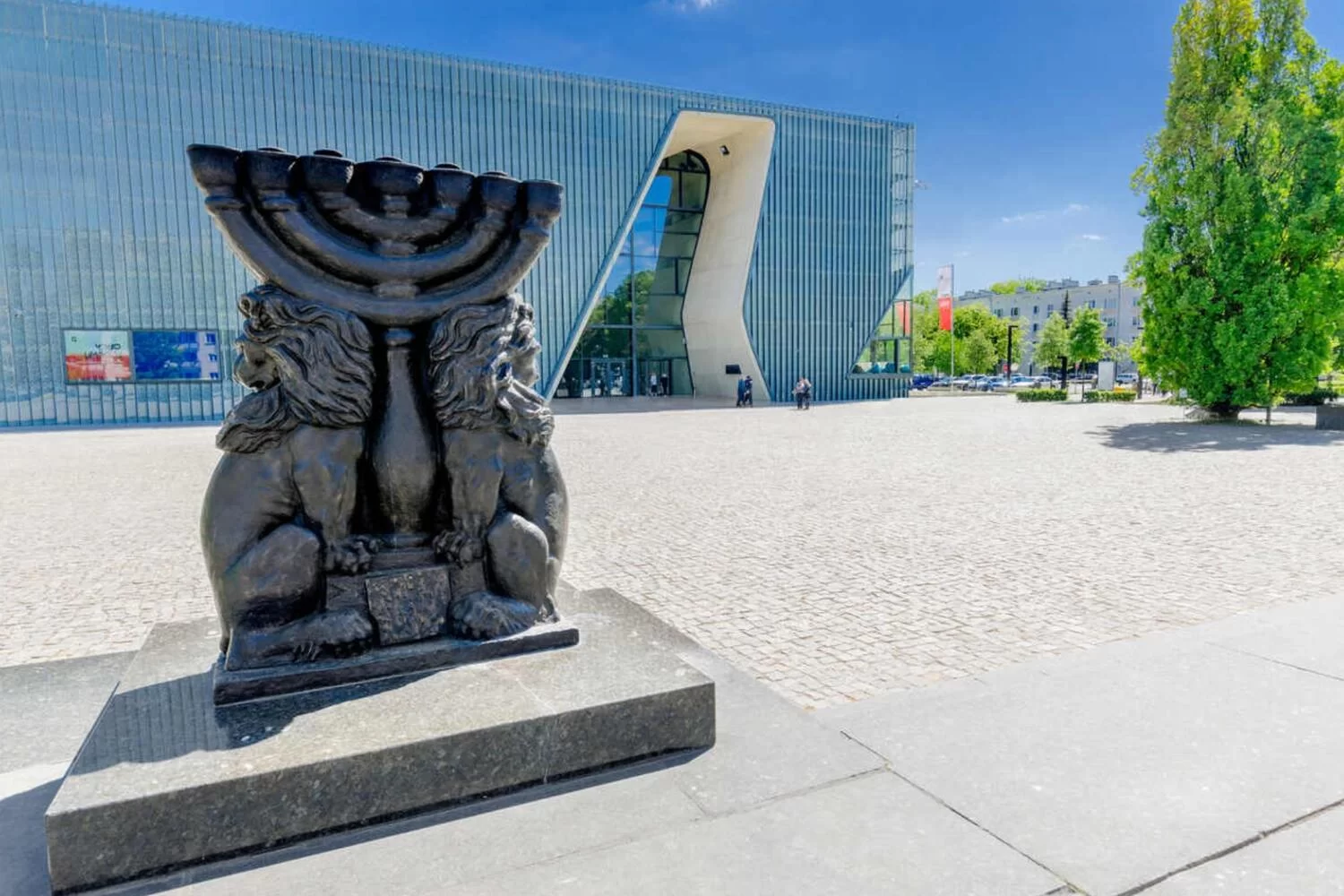
Lunch at Zapiecek
A well-known and tasty restaurant in Warsaw, Zapiecek is for authentic Polish diners. The menu features a wide variety of traditional dishes,
The traditional Polish menu is very true to the cuisine, which includes all the best dishes, from pierogi (dumplings) to bigos (hunter’s stew).
One of the standout dishes is the potato pancakes with meat, served with a side of sour cream. The pancakes are crispy on the outside and tender on the inside, with a savory filling that is sure to satisfy your hunger.
If you’re looking for something lighter, try the seasonal salad with blue cheese, which is fresh and flavorful. Zapiecek also caters to those with dietary restrictions, offering gluten-free options and vegetarian dishes.
The portions are generous, so you might want to share if you’re not too hungry. The restaurant has a cozy, rustic atmosphere with wooden tables and traditional Polish decor.

Afternoon: Warsaw Barbican and City Walls
Walk along the city wall to the Warsaw Barbican, a surviving part of the medieval fortifications. The Barbican was built in 1540; it was demolished during WWII but rebuilt in the 1950s.
It has, in large part, been preserved and is such a unique sight in Warsaw. The Warsaw Barbican is remarkable for its historical structure. It was established in 1540 and served as a part of the fortifications.
This structure was designed by an Italian architect named Jan Baptist the Venetian and ended up replacing an Eastern gate situated on Nowomiejska Street. The barbican is known to be a semicircular bastion with 3 stories and situated next to a spacious moat.
As Poland’s capital was razed to the ground following the war, so were the Barbicans. They were subsequently rebuilt in the 1950s according to prints dating from the Seventeenth century.
Of course, while you’re here, make sure to visit the Barbican Museum too. The entry fee is only 12 PLN, about $3, and you’ll learn a lot more than you think. Despite most tourists walking by, only a few visit, and you’ll see plenty of war archive photos before and after the reconstruction, which is really interesting.
After the museum, you can visit Old Town and see the Market Place, which is such a charming place with historical buildings, cafes, and stores. It’s surely worth coming here again on day 2 to enjoy the city’s true spirit.
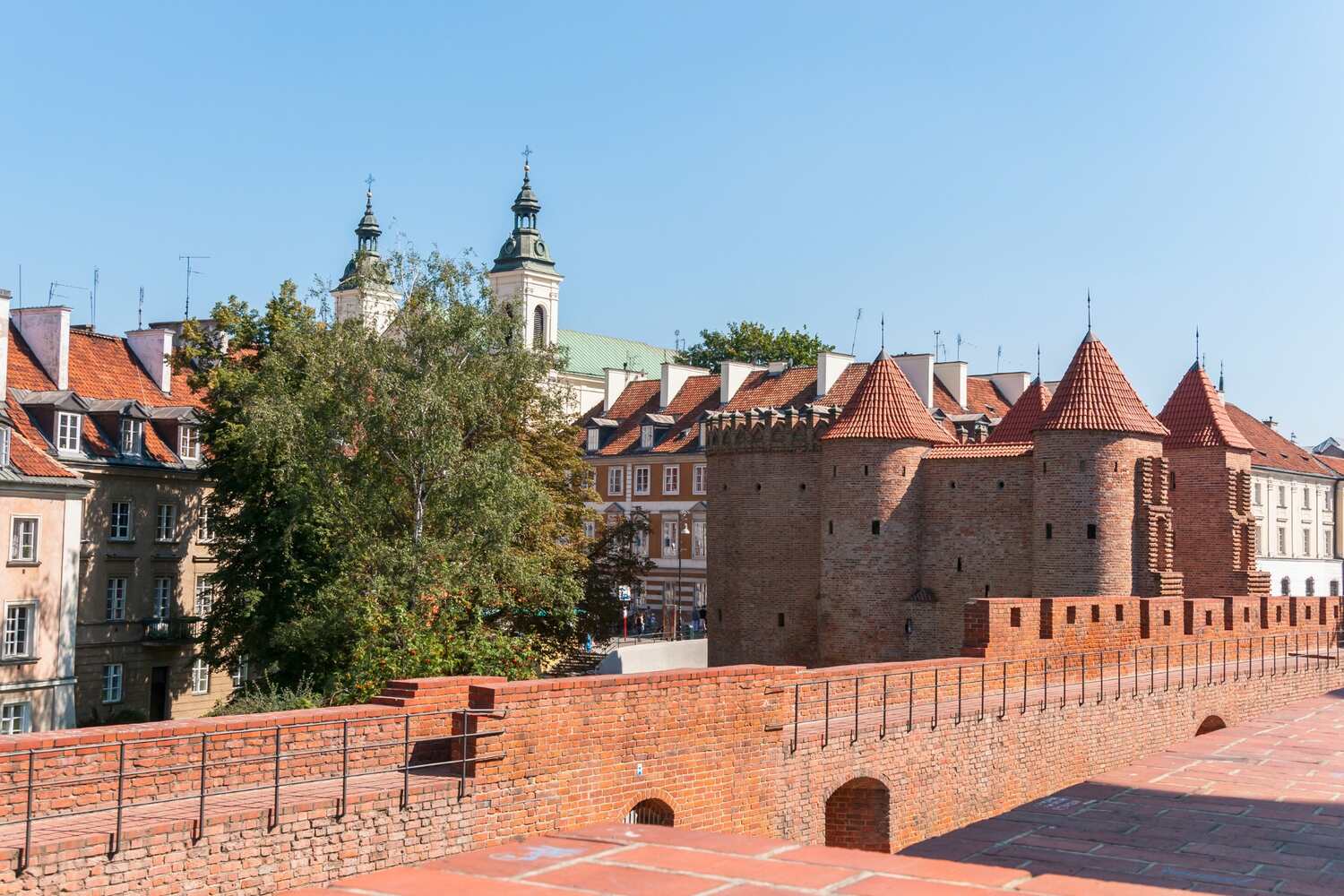
Afternoon: Shopping at the Złote Tarasy Mall
After a morning exploring the beautiful Old Town, Złote Tarasy is the perfect place for some retail therapy!
This high-end shopping mall is well located in the middle of Warsaw and includes 200 stores, from prestigious to global brands, that shoppers will run into when they head into the mall.
The moment you enter the mall, Złote Tarasy lets you escape with its sleek contemporary design, flooded in natural light by a glass roof, and it is like an open sky that feels very welcoming at any time.
You’ll have time to flip through the various outlets, and don’t forget to check out a few Polish brands that are available here in the Złote Tarasy.
Second, if you’re feeling peckish, stop for a bite to eat at one of the many restaurants and cafes in the mall. They serve Polish cuisine along with some of the international favorites. That’s good food all around.
Simply put, it makes the perfect afternoon break!
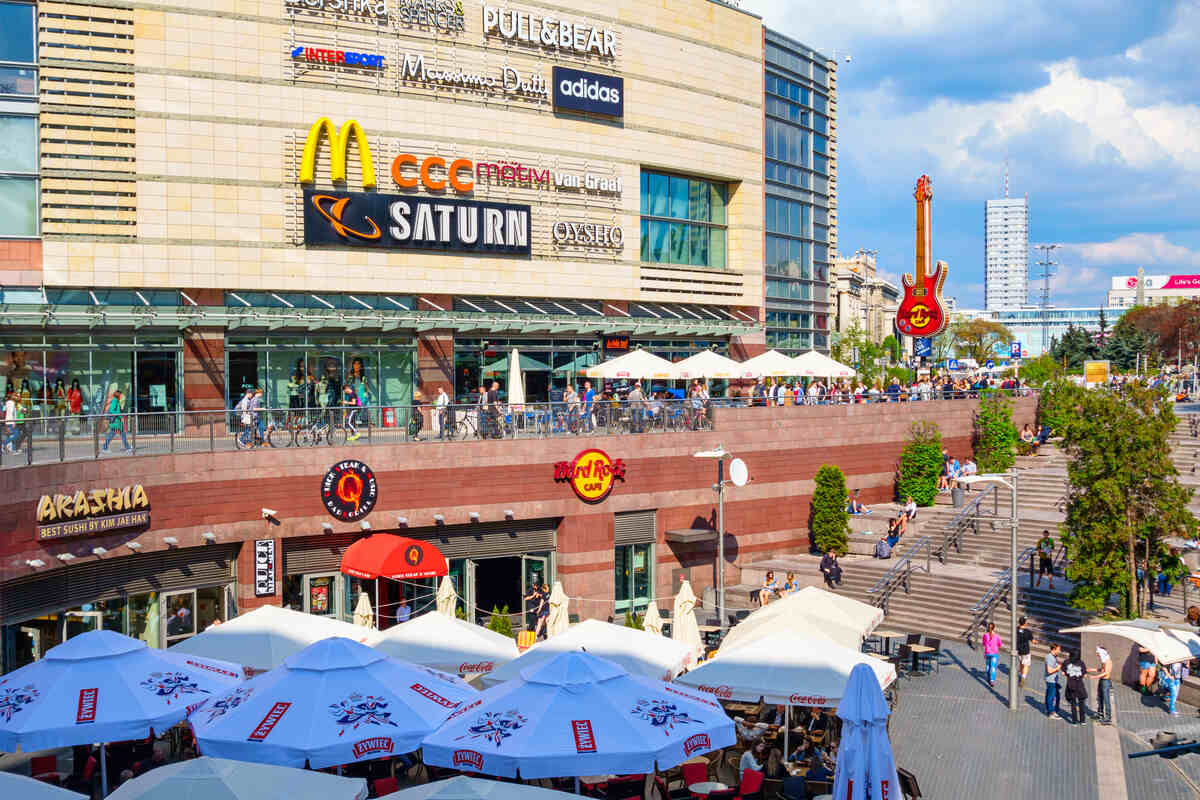
Evening: Join a Pub Crawl in Warsaw
Join the city’s best pub crawl in Warsaw to end the day, bringing you face-to-face with the town’s amazing nightlife and its passionate local guides.
The tour starts with a 1-hour long open bar and a free cocktail on entry. It’s a great moment to bond with the rest of the group, compete in some fun drinking games, or loosen your tongue so that you can socialize more.
From there, you will head to three other venues with free entry and a free shot on arrival. And after that, follow your guide to three more popular bars, enjoying a complimentary welcome shot at each.
And last but not least, you’ll get VIP access to a premier nightclub in Warsaw. This pub crawl offers a perfect blend of fun, camaraderie, and an authentic Warsaw party experience.
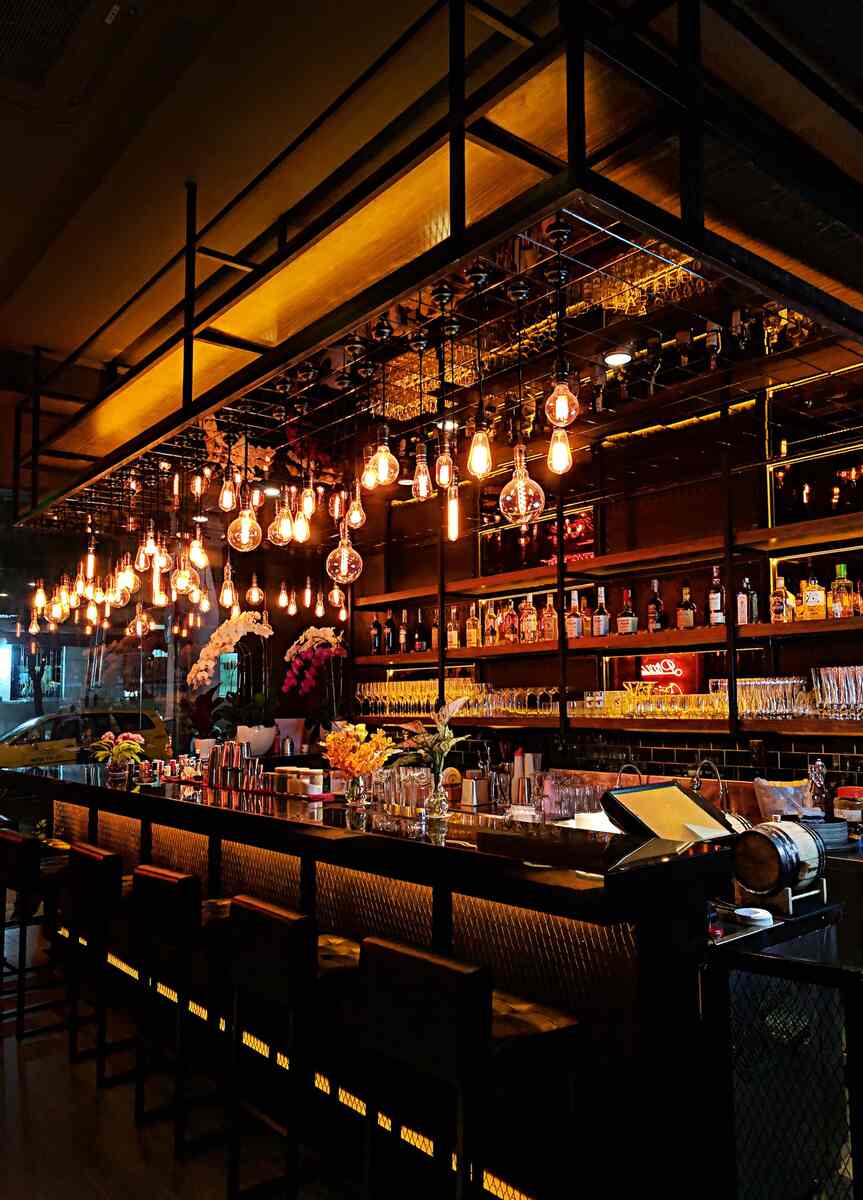
Warsaw Itinerary Day 3
You will definitely need more than three days to explore Warsaw. However, if you only have three days here, this is the best way to spend the last day of your Warsaw itinerary!
Morning: Take a Day Trip to Auschwitz
Start your final day early with a full-day trip to Auschwitz-Birkenau. It’s a long journey, and it takes around 4 hours each way. Needless to say, it’s one of those places that leaves a mark.
Most tours pick you up straight from your hotel in Warsaw between 4:45 AM and 7:00 AM (depending on the tour you pick)and include roundtrip transport and a licensed guide. Expect to be back in the evening, around 7:30 or 8 PM.
These are our best-selling trips to Auschwitz, and they always sell out. For this reason, we highly recommend booking now.
The tour guide explains the history of Auschwitz. How the camp operated, shares survivor stories, and you’ll understand what the daily life in the concentration camps was like.
After a short break, you’ll continue to Birkenau, the larger part of the camp. It’s more open and haunting—train tracks, guard towers, and ruins of the gas chambers stretch across the site.
Wear comfortable shoes, pack some snacks, and prepare yourself mentally. It’s worth noting that you can also take a tour to Auschwitz from Krakow, but this guide is all about offering the best itinerary for Warsaw.
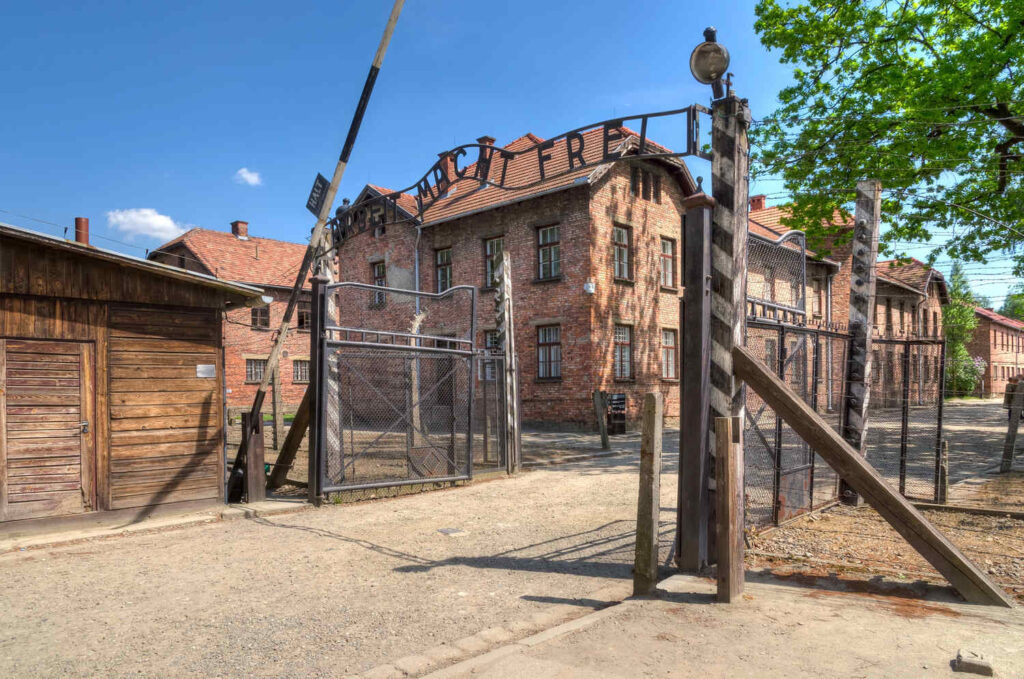
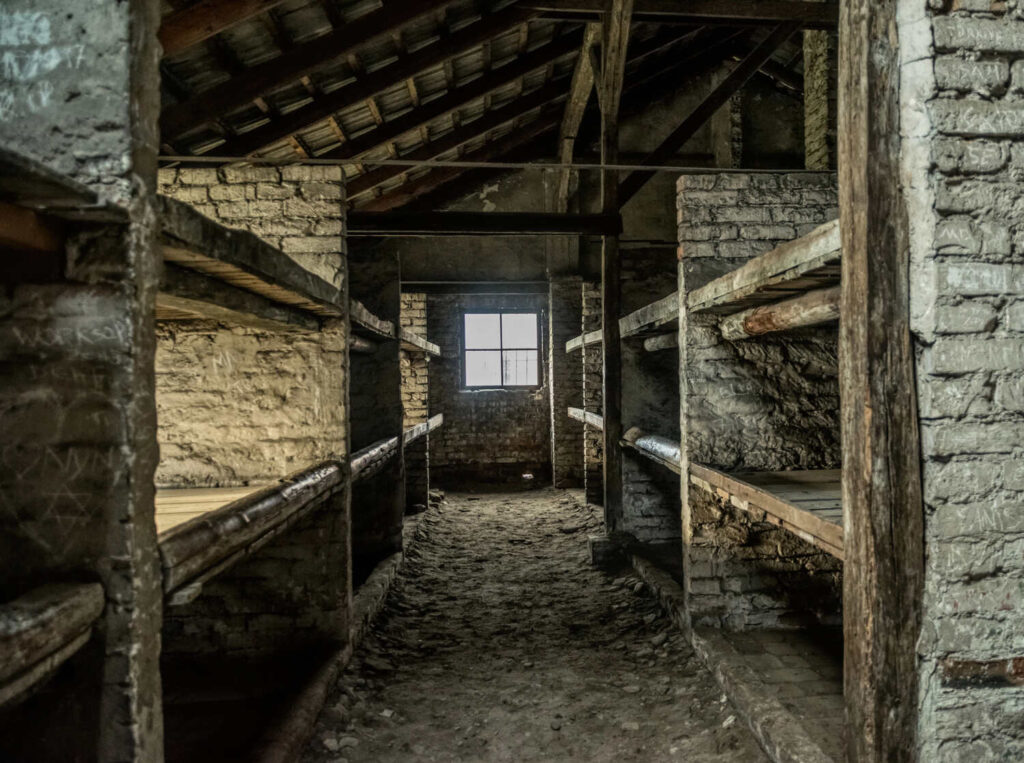
Afternoon: Visit the Wilanow Palace
There seems to be no end to the number of palaces in and around Warsaw. But Wilanów Palace Warsaw is the most beautiful and sprawling one to date, a beautiful work of art by King Jan III.
It’s painted all down there, with one single perfect shade of lemon, with classical architecture and color. It’s a bit further out, but well worth the trip.
Go back to the time when Poland was ruled by royalties and feel like a queen walking in the rose garden. Here’s what you need to know about the Wilanów Palace in Warsaw at some point in time during your visit.
In case you want a private, comprehensive tour of the Wilanow Palace, which I highly recommend to learn everything about it, check out this one, with an expert guide.
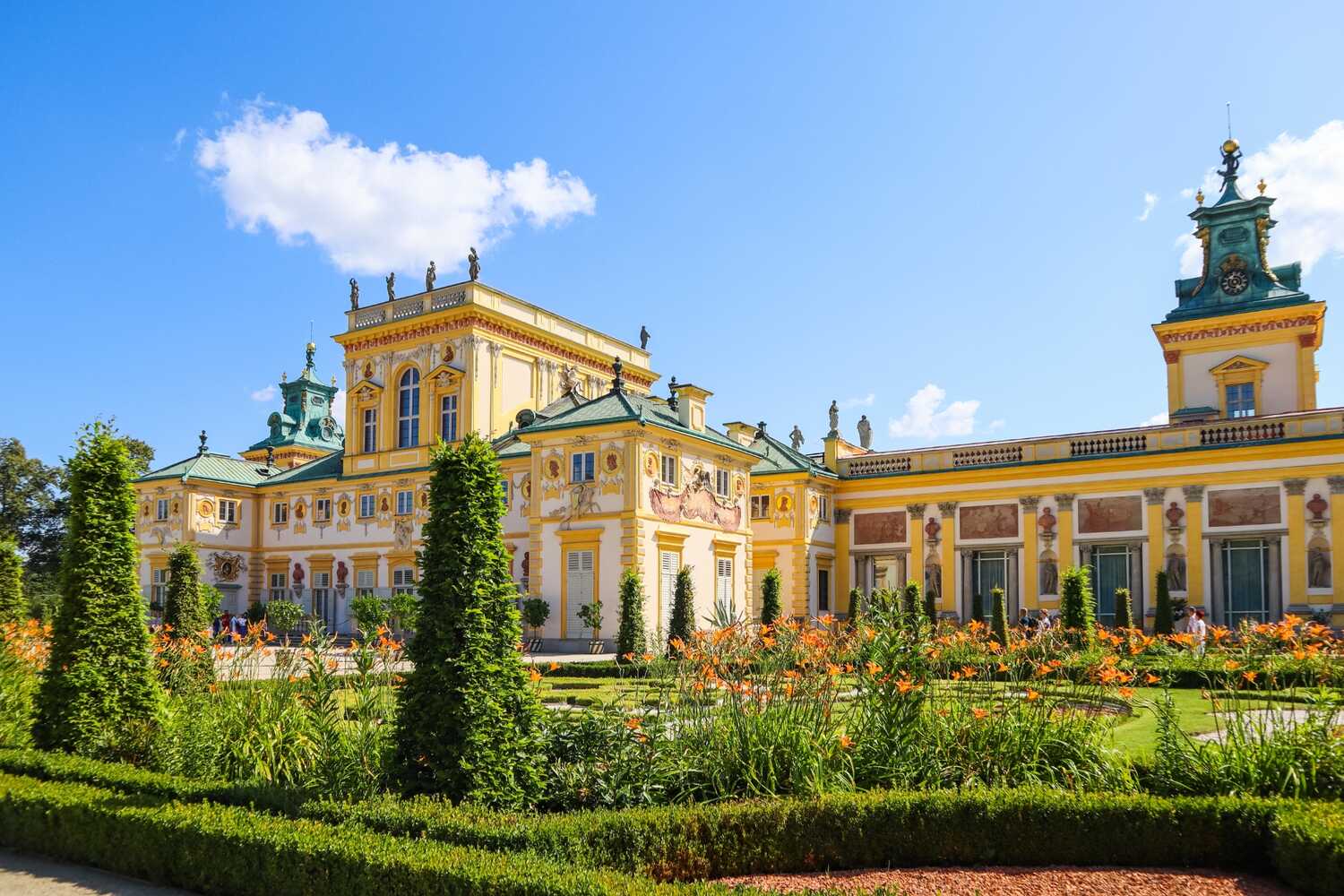
Relax at the Vistula River
The Vistula River was used as a major roadway in the pre-history period. Grain was brought to Gdansk, and goods and sand were taken to the other side of the city in wooden boats.
Now all this is history but nowadays, you can relax on the bank or take a cruise to admire the city from the river, which is a good way to get to know old traditions.
In the summer, there are different possibilities – You can get catamarans, gondolas, and kayaks, as well as traditional boats that will hold twenty people on board.
You can also rent a motorboat, a yacht if you like, and that will make the last night of these 3 days in Warsaw even better.
My personal favorite is the river cruise, and in case you decide to take one, I recommend prebooking it online as they always sell out, especially during the summer.
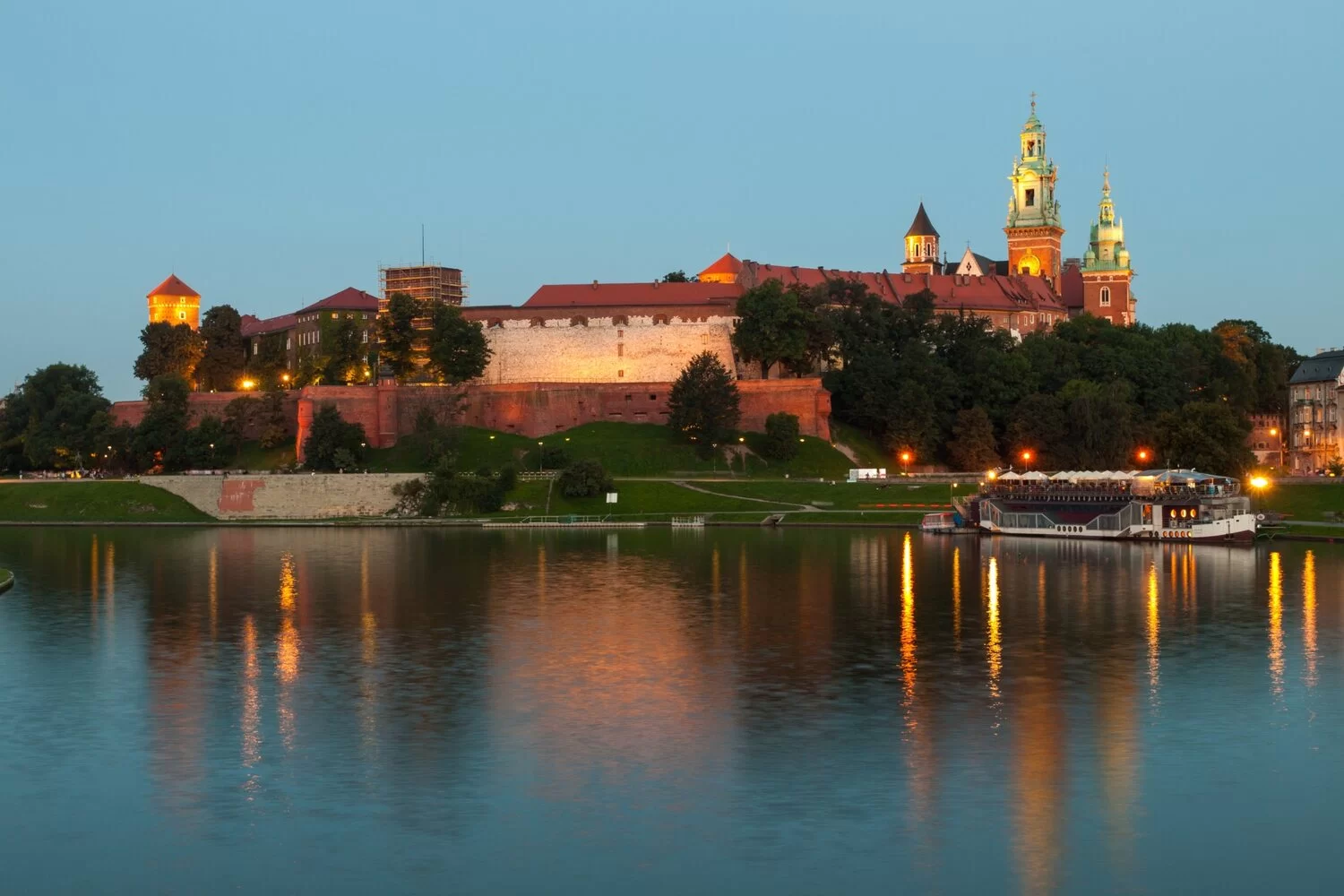
Things to Know Before Visiting Warsaw
Language: Most of the locals speak Polish, the national language. Young people in Warsaw and other tourist destinations speak English which is why you might manage to get along without knowing Polish.
Currency: Poland’s currency is Złoty. It’s very easy for Warsaw’s money exchange to be as common as in the rest of Europe. Banks exchange currency, as well as the money changers at the airport (Kantor), which can be used for foreign exchange. Alternatively, most stores in town accept cards, which is convenient.
Transport: Warsaw and most of Poland are easy to get around. However, if you would rather not walk, you can easily get a bus, tram, metro, or Uber in Warsaw.
Safety: Poland is a pretty safe place to visit, but always keep an eye on your belongings, especially if drinking at night.
What is the Best Time to Visit Warsaw?
The sweet spot is between late May and September. That’s when the weather is warm, the parks are green, and there’s always something going on. Festivals, outdoor concerts, and weekend street markets. Expect daytime temperatures between 18 and 27°C.
If you want decent weather without the crowds, October is also a good time. It’s cooler, and some trees start turning orange, but it’s not freezing yet. Plus, hotels and flights get a little cheaper, and you won’t be waiting in line at every museum or restaurant.
Winter (December to February) is cold and grey but has its own charm, especially with Christmas markets and snow-dusted Old Town streets. Just dress warm and don’t expect too much daylight.
How to Get Around Warsaw?
Warsaw is one of those cities where you can do a lot just by walking. The Old Town, Royal Route, and downtown area are all pretty close together, so you can easily explore without using transport every five minutes.
But when your legs need a break, the city’s public transport steps in. The metro is fast and clean, the trams are reliable, and buses run late into the night. Tickets are cheap and work across all systems—you just need to validate them once. If you plan to hop on and off all day, go for a day pass or 72-hour ticket.
And if you’re carrying bags or coming back late? Grab an Uber or Bolt. They’re cheap, quick, and don’t require small talk if you’re not in the mood. Easy.
Where to Stay in Warsaw
Last but not least, let’s talk about the accommodation options in this stunning tourist destination, whether you travel on a budget or looking for a premium property.
Luxury: The Westin Warsaw
The Westin Warsaw, centrally located, offers rooms with the Heavenly Bed and panoramic city views. It features a glass elevator, Fusion Restaurant, and JP’s Café & Bar.
Amenities include free internet, a fitness center, sauna, and massage services. Nearby are Saxon Garden, theatres, and museums, with the Old Town less than 2 km away.
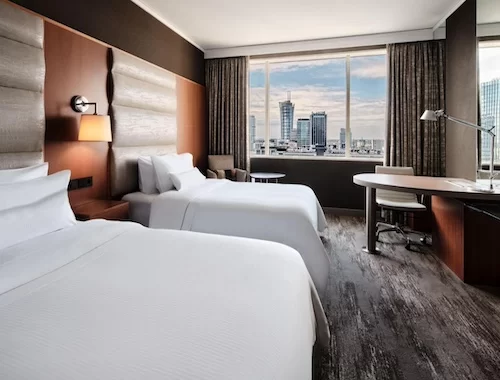
Mid-Range: Holiday Inn Warsaw City Centre
Holiday Inn Warsaw City Centre provides rooms with modern amenities and free full board for children under 12. It has a restaurant, fitness center, bar, and lounge.
Services include a 24-hour front desk and room service. Attractions like Warsaw Uprising Museum and Złote Tarasy Shopping Centre are close by.
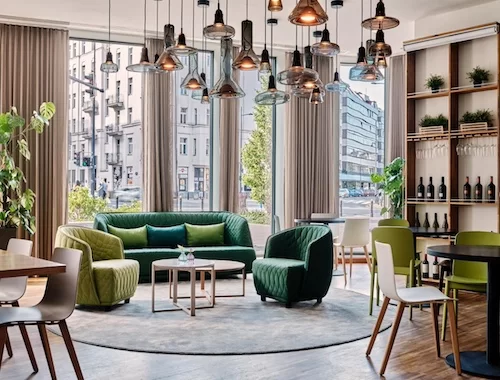
Budget: Oliwka Hostel
Oliwka Hostel, in central Warsaw, is near Zacheta National Art Gallery and Palace of Culture and Science. It offers a shared kitchen and lounge, with English, Polish, Russian, and Ukrainian spoken at reception.
Attractions like Warsaw University and Grand Theatre are nearby.

Final Thoughts: Warsaw in 3 Days
Three days in Warsaw is just enough to get a proper feel for the city. You’ll cover the must-sees, the Royal Castle, Old Town, Łazienki Park, and a couple of heavy but important museums. You’ll also have time to eat well, listen to some Chopin, and maybe even take a day trip that sticks with you long after you’ve left.
Warsaw’s not a show-off city. It doesn’t scream for attention, but it quietly grows on you. The mix of history, resilience, and everyday life makes it one of Europe’s most underrated capitals. And chances are, once you’ve seen it, you’ll want to come back.
